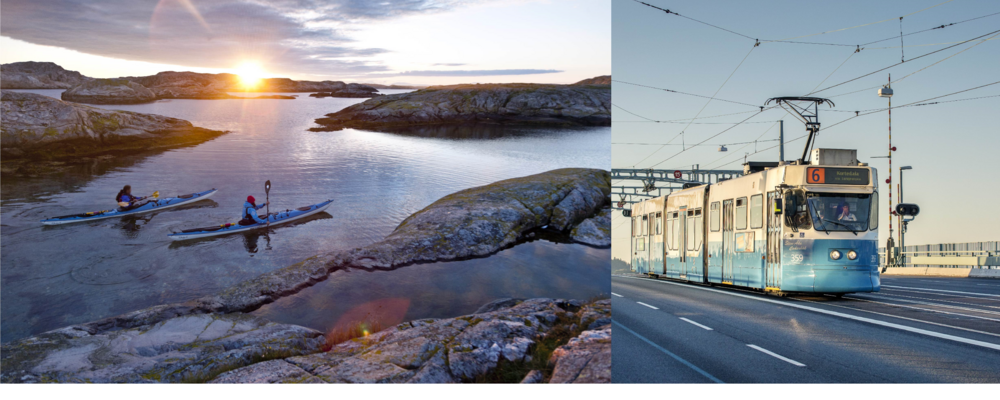
Travel information
Göteborg (Gothenburg) is located on the Swedish west coast in the southern part of the country, 300km north of Copenhagen, 300km south of Oslo and 450km southwest of Stockholm. EDAR6 will start Sep 22 in the afternoon and will end Sep 27 after lunch
Göteborg can be reached conveniently (and often enjoyably) by many different ways.
1. By air
The airport “Göteborg Landvetter” is served by many international airlines and connects with direct flights to many major cities in Europe. Overseas connections commonly fly through Copenhagen, Frankfurt, Amsterdam and other hubs..
Landvetter airport is located 25km east of the city. There are buses every 30min (airport bus, flygbussarna) that stop in front of the congress centre (“Korsvägen/Svenska mässan”). The trip takes 20min and costs SEK 120. Taxis have a fixed price (ask for it!) from the airport, which should not be more than about SEK 450.
2. By train
From the European continent you connect through Copenhagen. There are about 15 trains per day from Copenhagen to Göteborg. Depending on the type of train, the journey from Copenhagen to Göteborg takes between 3.5-5h.
3. By car and ferry
When planning for a vacation or travelling from Europe with several people, the car may be a more suitable option and probably the most economic one. Any way that you choose, you will need to traverse over water to reach the Scandinavian subcontinent
Coming from the western part of Central Europe you generally travel via Hamburg, Germany. From Hamburg the journey to Göteborg takes about eight hours. There are several options:
• The bridge-tour through Denmark. From Hamburg via Odense (320km), Copenhagen (150km), Malmö (10km) to Göteborg (280km). Total trip about 750km.
• From Hamburg to Frederikshaven (about 500km) in the north of Denmark and then by ferry to Göteborg; depending on the type of ferry the trip is 2-3h. About eight departures per day (www.stenaline.com).
• From Hamburg to the ferry Puttgarden-Rødby (160km; Germany to Denmark, ferry 45min, every 30min), through Denmark to Helsingør (200km), ferry Helsingør-Helsingborg (Denmark to Sweden, 20min, every 20min) and then to Göteborg (230km). Operated by Scandlines (www.scandlines.com). As an alternative to the second ferry one can also use the spectacular Öresund bridge from Copenhagen to Malmö (this trip is 50km longer).
• From Hamburg to Kiel (100km) and then the overnight ferry (with cabins) Kiel-Göteborg with daily departures at 1930. The ferry takes 13.5h.
Coming from the Eastern part of the Central Europe, you may choose the route via Rostock and then by ferry to Trelleborg. This ferry takes 6-7h with three departures per day. Operated by Scandlines (www.scandlines.com). Trelleborg-Göteborg: 300km.
There are ferries to Göteborg from the UK and those are served by DFDS (www.dfdstorline.com/Infobridge/). The most common route is Newcastle-Göteborg (via Norway, 26.5h, two per week).
Coming from Eastern Europe and Finland: there are various ferries connecting to Sweden, commonly via Stockholm (from Talinn, St. Petersburg, Helsinki) or Norrköping (from Helsinki, Riga) or Karlskrona (from Gdansk). Stockholm-Göteborg is 450km, about 5-6h by car or 3.5-6h by different types of trains. Check your travel agent for companies serving those ferry routes.
Contact
Conference secretariat:
CARe
Department of Infectious Diseases, Institute of Biomedicine
Sahlgrenska Academy, University of Gothenburg
Guldhedsgatan 10A
S-412 94, Göteborg, Sweden
E-mail: care@gu.se
Professional conference organizer:
EDAR 2022
MeetX AB
S-412 94, Göteborg, Sweden
E-mail: edar2022@meetx.se